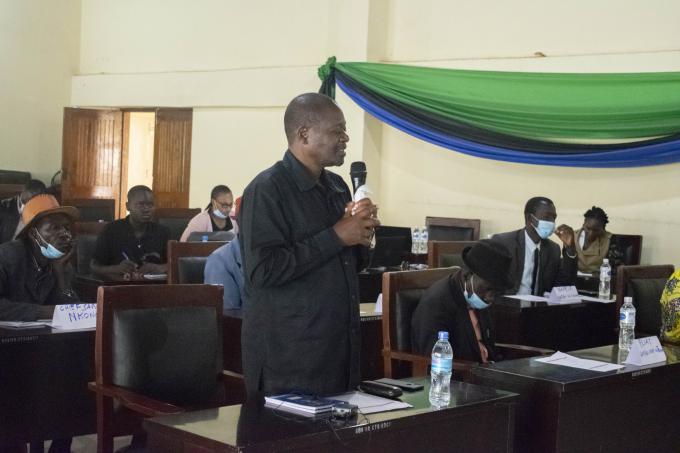Joining Hands to Improve Nutrition Indicators in Rukwa Region
With 47% stunting rate (TNS 2018) above national average 32%, Rukwa is one of the regions in Tanzania with high under-nutrition rates despite being one of the bread basket regions of Tanzania. Before Lishe Endelevu interventions, Rukwa had not recently received any donor support targeting nutrition. In 2019, USAID Lishe Endelevu project was officially launched in Rukwa where stakeholders called for the project to work closely with community leaders and traditional chiefs because these were the gate keepers of any behavioural change in the community and are trusted by community members.
To improve the situation in the country, in 2017, the government under the Vice President’s Office introduced a compact between the regional authorities. Compact is a contractual agreement between the Vice President and Regional Commissioners to foster implementation of National Multisectoral Nutrition Action Plan by scaling up the implementation of nutrition activities at Regional and LGAs levels. The Compact monitors a select number of nutrition indicators where performance is measured using a score card approach. Ever since the launch and signing of the compact agreement in 2017, Rukwa region has always struggled in performance and had always been ranked last position, that is 26th position, out of a total of 26 regions in the country.
During the 2019/20 Compact Review period, USAID Lishe Endelevu joined hands and supported the Rukwa regional leadership including political, administrative, technical and traditional chiefs to strategize on how to improve the nutrition situation in Rukwa. These meetings included; advocacy sessions to secure actionable commitments from the political and administrative leaders, multi-sectoral departmental heads, ward and village leaders as well as traditional chiefs. Each of the groups/leaders came out with action plans while pledging for accountability to ensure everyone plays their part to ensure improved nutrition outcome to the target communities.

Photo1: Chief Malema explaining their planned strategy for positive nutritional behavioural change where they will be holding periodic community nutrition galas, show casing nutritious rich foods, cooking and testing demonstrations, reminding community on the importance of the rich food culture and nutritious diet for the wellbeing of not only individual but also healthy households and community at large.

Photo 2: Rukwa Regional Commissioner, Honourable Joachim Wangabo, who is also the Head Chief Wangabo pledging his commitment to work with local chiefs in promoting good nutrition awareness and as Regional Commissioner, work closely with District Commissioners to ensure nutrition is supported in terms of budget allocation and expenditures.
Recognising progress
With intensified community WASH, nutrition counselling, education and promotional activities at community level, increased leadership accountability and political commitment among decision-makers and technocrats, this has resulted into improved nutrition compact indicators from village to regional level. Joint efforts have resulted in tremendous improvement for the Rukwa region on the implementation of Nutrition.

Photo 3: Lishe Endelevu Community Health Worker (CHW), conducting nutrition education during support group meeting to lactating mothers with children under 2 years.
Compact indicators improvement for Rukwa region have enabled the region to shift from 26th position (last position) in 2019/20 to 13th position 2020/21 which calls for huge congratulation for the Rukwa Regional and Local Government Authorities as well as and the network of traditional leaders who collaborated with the USAID Lishe Endelevu project to ensure household sustainable nutrition interventions are implemented in Rukwa for improved community nutrition outcomes.


CAPTION: Screenshots of the National Nutrition Score Cards Dashboard comparing statistics for 2017/18 and those of 2020/2021 where Rukwa region has scored green in all indicators except one, which has also improved from red.
 Tanzania
Tanzania